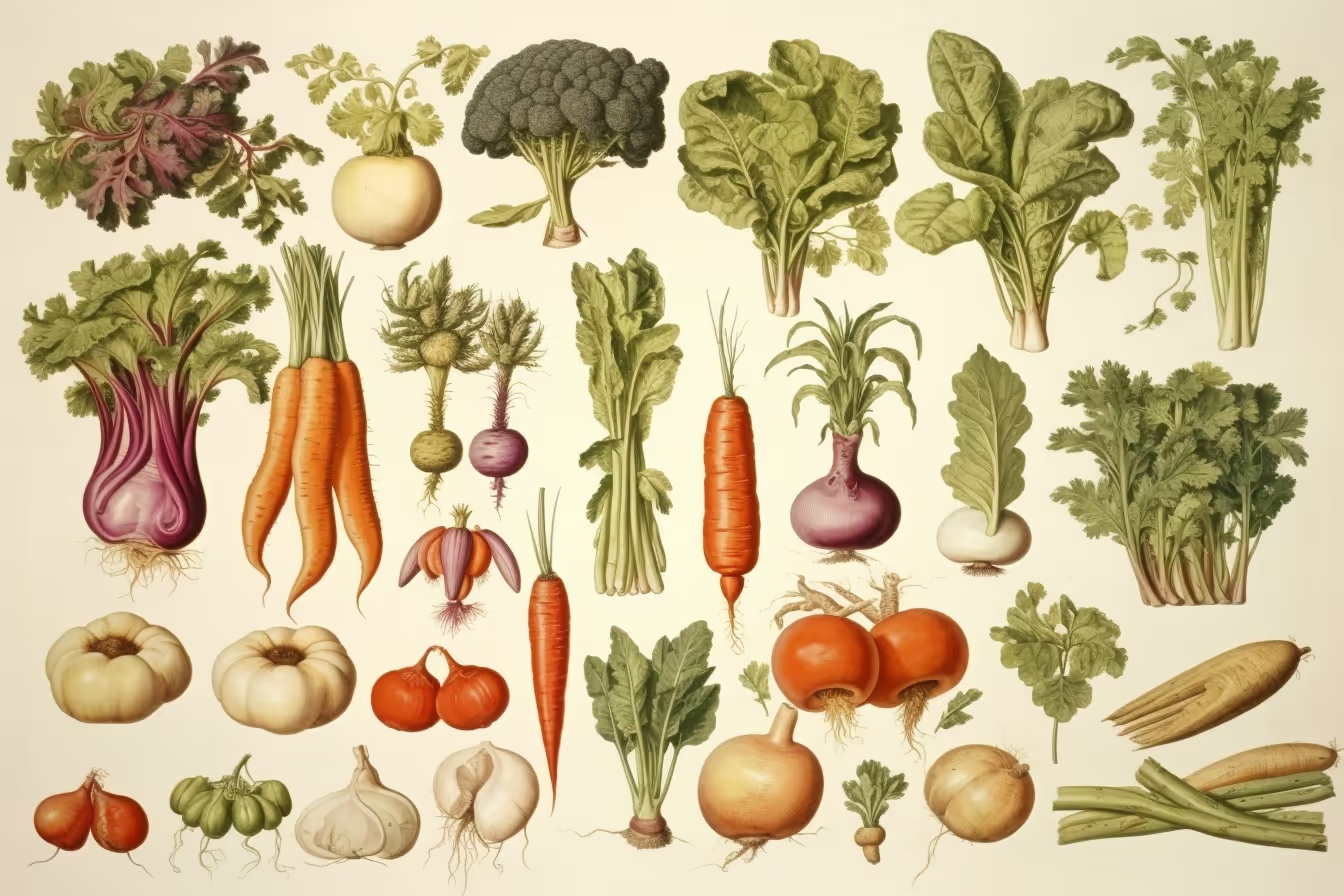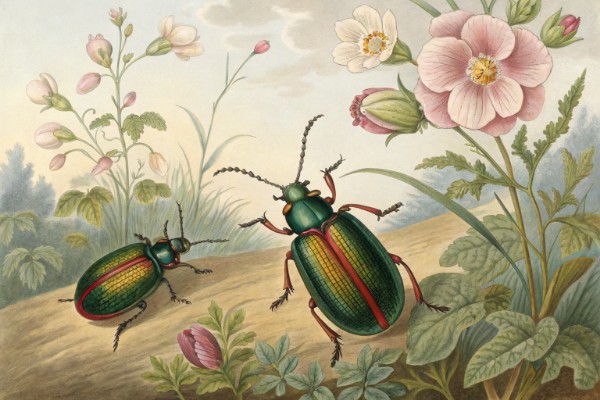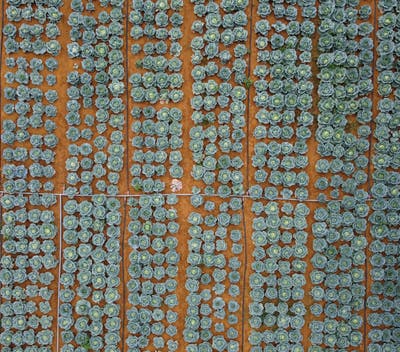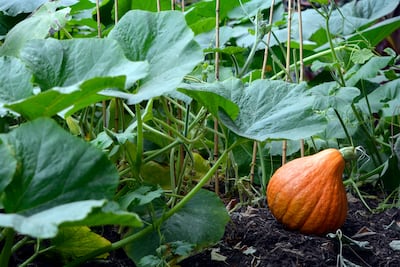Zone 13 Planting Guide: Exotic Gardens for Warm Climates

Zone 13 planting guide
This Zone 13 planting guide shows you how to cultivate lush, tropical gardens in scorching conditions. Understand the swift rhythms of Zone 13 planting seasons, select heat-loving flora like mangoes or hibiscus, and master irrigation to keep exotic plants thriving. Read on to savor insights from growers who coax rare beauty from extreme climates.
Cheatsheet: Exotic Zone 13 Gardens — Quick Guide
🌡️ Zone 13 Climate Basics
Year-round warmth: 65–80°F (18–27°C) min. No frost. Humidity: often >60%. Rain: up to 120"/year (300cm). Grow almost anything tropical.
🌴 Best Exotic Plants
- Palms: Traveler’s, Foxtail, Coconut
- Fruiting: Mango, Papaya, Starfruit, Guava
- Flowers: Hibiscus, Bird of Paradise, Plumeria, Heliconia
- Vines: Passionfruit, Mandevilla, Bougainvillea
- Herbs: Lemongrass, Ginger, Turmeric
🗓️ Planting Calendar
- Wet season (spring/summer): Start seeds, transplant exotics, feed heavy.
- Dry season (autumn/winter): Mulch, prune, water deeply every 3-5 days.
🌱 Soil + Site Prep
- Mix in 4–6" (10–15cm) compost
- Test pH: most exotics thrive 6.0–7.0
- Raise beds in flood-prone areas
- Mulch 3" (8cm) to lock moisture
💧 Water & Fertilizer
- New plants: Water daily 2 wks, then taper
- Established: Deep soak 2x/week
- Fertilize every 4–6 weeks with slow-release organics
🥭 Harvest & Nutrition
- Pick mango, papaya & guava at peak for max vitamin C & fiber
- Harvest herbs as needed for immune & culinary boost
🧰 Tools and Products You'll Need
- Bypass pruners
- Long-handle spade
- Drip irrigation kit
- Soil pH tester
- Mulch (organic)
- Slow-release fertilizer
✅ Steps for Success
- Plan layout: Map sun/shade, space tall palms north, understory east/south.
- Prep soil: Mix compost, adjust pH, mound low spots.
- Install irrigation: Lay drip lines or soaker hoses.
- Mulch and plant: Add plants, mulch, water in.
- Feed & prune: Fertilize, prune spent flowers monthly.
- Harvest: Collect fruit/herbs at peak ripeness.
I garden where nights stay warm and frangipani scents the mailman, and this Zone 13 planting guide comes straight from those sweaty, heavenly trenches. Zone 13 means average annual extreme minimums of 60 to 70 F, 16 to 21 C, so frost is a rumor and growth rarely hits pause.
I start by mapping heat traps, wind lanes, and reflected light off walls. In this zone, concrete behaves like a second sun after 3 p.m., so plant heat lovers near it and tuck tender foliage under dappled canopy.
USDA 2023 map: Zone 13 exists where winter minimums average 60 to 70 F, 16 to 21 C, often in parts of Hawaii, Puerto Rico, and similar climates. The new map trends warmer on average compared to 2012, per USDA-ARS.
Warmth speeds metabolism, so plants eat and drink around the clock. Irrigation and nutrition must follow that cadence or you get lush leaves and no fruit.
Think wet season and dry season, not winter and summer. I transplant just before the reliable rains shift, then harden plants with deeper, less frequent watering once roots bite.
Midday planting cooks root hairs, so I set in at dusk with a seaweed drench. The next morning, I mulch before breakfast.
Fast drainage with steady moisture wins, so I blend volcanic cinders or coarse perlite into loams and add compost in thin pulses. Tropical soils can run acidic, and I watch pH with a simple meter and fine tune with sulfur or a calcium source as needed.
Salts creep in fast in heat, so I leach beds every 6 to 8 weeks with a deep soak. I capture roof runoff for a lower EC water source, since rain beats hard tap water for sensitive gingers and orchids.
I lay 3 to 4 inches, 7.5 to 10 cm, of chipped wood or coarse coconut husk. Mulch keeps roots cool, suppresses weeds, and feeds the fungal highway that pushes nutrients through the rhizosphere.
The Royal Horticultural Society notes that organic mulches stabilize soil moisture and temperature and can cut watering needs dramatically. In Zone 13 that is not a luxury, it is the backbone.
- Drip or micro-sprinklers: I run 0.5 to 1 gph emitters, 2 to 4 lph, and cluster two per tree for redundancy.
- Subsurface lines: They reduce evaporation and leaf disease on heliconia and turmeric.
- Scheduling: I follow evapotranspiration, ET, not the calendar, and nudge run times up during trades and heat spikes.
- Sensors: A tensiometer or capacitance probe pays for itself in saved water and better fruit set.
The FAO’s irrigation guidance pegs ET as the gold standard for scheduling, and my yields jumped the season I switched from guesswork to data. Plants stopped sulking at noon.
I use a three-story forest: tall wind-hardy backbone trees, edible midstory, and a spice-and-groundcover understory. This stacks shade, habitat, and harvests and stabilizes humidity for epiphytes.
Trade winds shear tall trees, so I thin crowns before cyclones and keep scaffold branches with strong angles. I have seen a mango spare the house by spilling wind through a pruned canopy.
- Plumeria, frangipani: Bone-easy, cuttings root in a jar, perfume like a five course meal.
- Heliconia: Cut-flower workhorse; loves rich soil and steady moisture.
- Alpinia and Etlingera gingers: Edible shoots and flaming bracts, heavy feeders.
- Brugmansia: Trumpets at dusk, toxic if ingested, site away from pets and kids.
- Banana, Musa spp.: Windbreak and dessert, needs potassium and water by the bucket.
- Mango: Dry-season bloom, prune open centers for airflow and light.
- Avocado: Choose compact types; drainage makes or breaks it.
- Soursop and sugar apple: Creamy pulp; thin fruit for size.
- Breadfruit: A living pantry; buttress roots and wide stance require room.
- Papaya: Fast from seed; replant yearly for steady supply.
- Cacao and coffee: Understory duo; shade-grown quality improves flavor.
- Vanilla orchid: Train on live trellis; hand pollination in morning window.
- Night-blooming cereus: Lunar theater, bat and moth magnet.
- Perennial peanut, Arachis glabrata: Living mulch, nitrogen fixer, tidy between beds.
- Taro, Colocasia esculenta: Moist pockets, powerhouse starch and ornamental leaves.
Dry season favors flowering on mango, lychee, some annonas, so hold nitrogen and bump potassium and magnesium. Wet season fuels vegetative push for banana, taro, and ginger, so feed and keep roots breathing.
I foliar spray micronutrients at dawn monthly in the wet season for glossy leaves and fewer deficiencies. Chelated iron solves chlorosis fast on calcareous spots.
I rely on slow-release granules, CRF, set by soil temperature and a light hand on soluble feeds. In heat, salts scorch, so I spoon-feed and watch leaf tips for early warnings.
Sulfate of potash, not muriate, treats salt-sensitive crops like banana and avocado better. Calcium and boron during fruit set reduce split skins in papaya and tomato.
- 30 to 40 percent cloth: Seedlings, lettuces, and orchids during heat spikes.
- 50 to 60 percent cloth: Gingers, ferns, cacao under brutal afternoon sun.
- Misters: Cool air and lift humidity for epiphytes, but increase spacing to prevent leaf disease.
Leaf temperature can sit 5 to 15 F, 3 to 8 C, above air on still afternoons. Shade and airflow trim that gap and stop midday stall.
I use chunky orchid bark, coarse perlite, and coconut chips for epiphytes and tropical aroids. Air-pruning pots keep roots fibrous on plumeria and citrus starts.
Train vanilla, dragon fruit, and black pepper up a living trellis of gliricidia or moringa. You harvest standing up, which your knees will thank you for.
Heat speeds pests, so I scout early mornings with coffee and a headlamp. Scale and mealybug yield to horticultural oil and alcohol swabs, and I release lacewings during wet months.
Fruit flies target guava and papaya, and bait stations plus sanitation cut losses sharply. UC IPM recommends integrated methods, and that balanced mix beats any single product in this climate.
I triple-stake young trees, drop stake height as trunks thicken, and remove ties early to build taper. I prune before storm season, never after the first warning siren.
Cache spare emitters, a roll of repair couplers, and a hand saw in a dry box. The garden works like a small boat, and kit readiness saves the harvest.
I run edible hedges of Surinam cherry or Barbados cherry that cut wind and feed birds. A perfume alley of plumeria, night-blooming jasmine, and brunfelsia turns dinner into theater.
Butterfly and bat habitat pulls in pollinators that punch above their weight on dragon fruit and cereus. I leave a few wild patches for native bees, no sprays during bloom, and always a dish of water with stones.
I quarantine new plants 3 to 4 weeks away from prized beds. Check state invasive lists and the USDA PLANTS database before letting anything hop the fence.
Beth Chatto’s rule still rules. Right plant, right place saves time, water, and heartache in the tropics.
- Smart irrigation controller: ET-capable unit paired with a simple rain gauge or local weather feed.
- Moisture and EC meter: Catch salt buildup before leaves complain.
- Shade cloth with grommets: 30 to 60 percent, UV-stable, cut to bed sizes.
- Coarse mulches: Arborist chips, coconut husk, or sugarcane bagasse.
- CRF fertilizers: Controlled-release with micronutrients tuned for fruiting trees.
- Pruning kit: Bypass pruners, folding saw, sterilant, and spare blades.
- Pest kit: Horticultural oil, yellow sticky cards, and beneficial insect supplier on speed dial.
I dig wide, plant high, and water in with a kelp and humic acid solution. Two inches, 5 cm, above grade keeps crowns dry during monsoons.
I shade new plantings with burlap for the first fortnight. The roots settle while the leaves keep their cool.
- Papaya hates wet feet in clay, so build a mound or walk away.
- Mango fruit splits after heavy rain if calcium is low and watering is erratic.
- Bananas like company, so keep 3 stems per mat: a mother, a daughter, and a granddaughter.
- Vanilla only sets if pollinated by late morning, and the window closes fast.
- Brugmansia perfumes at dusk, but site downwind of bedrooms, or nobody sleeps.
- Weekly: Check emitters, scout undersides of leaves, and reset sticky traps.
- Monthly: Foliar micros at dawn, prune suckers, and top up mulch.
- Quarterly: Soil test pH and EC, leach beds, and tune irrigation times.
- Storm season prep: Thin crowns, secure shade cloth, and stake new trees.
Vapor pressure deficit, VPD, guides my shade and misting, with a sweet spot around 0.8 to 1.2 kPa for many tropicals. You can estimate with a simple chart and cheap hygrometer.
I track growing degree days to predict dragon fruit flowering. It feels like cooking by smell, only with numbers that actually line up.
- USDA Plant Hardiness Zone Map, 2023 update, USDA-ARS.
- University of Hawai‘i CTAHR publications on tropical fruit, irrigation, and windbreaks.
- FAO guidelines on irrigation scheduling and water quality for horticulture.
- Royal Horticultural Society guidance on mulching and pruning best practice.
- UC IPM for tropical and subtropical pest management without collateral damage.
- Royal Botanic Gardens, Kew for botany-first plant profiles on exotics.
Choose nurseries that graft on local rootstocks, provide phytosanitary certificates, and share trial data. Ask for bloom times, true-to-type guarantees, and salt tolerance notes for coastal sites.
For seeds and specialty stock, look for vendors that ship with cold packs or heat shields by season. Skipping that detail can wipe a cart faster than any pest.
This climate lets you grow like a chef with a midnight pantry. The garden hums after dark, and if you feed it right, it feeds you back twice.
I have harvested mango in the rain and orchids before sunrise, and I still get goosebumps on a good flowering night. Zone 13 rewards the watchful and the curious, every single week of the year.

Want smarter plant choices? 🪴
Frequently Asked Questions About Zone 13 Gardening
Which plants thrive best in Zone 13's intense heat?
Go beyond convention and choose species accustomed to tropical brilliance. Think hibiscus, bougainvillea, plumeria, and passion vines to create dramatic color and fragrance. For edibles, mangoes, papayas, pineapples, and bananas flourish boldly in these sultry conditions.
What watering strategies keep Zone 13 gardens thriving?
Forget frequent sprinklers—instead, practice deep, infrequent irrigation, allowing water to penetrate deeply and plants to root robustly. Drip irrigation or soaker hoses deliver moisture precisely, minimizing evaporation in the blazing sun.
How can I protect delicate plants from intense midday sun?
Channel your inner jungle: construct shaded retreats with taller, heat-loving plants casting dappled shadows or install shade cloth to create strategic refuge spots. Arrange delicate specimens beneath palms or banana plants to shelter them from harsh rays, permitting their tender beauty to flourish.
What kind of soil amendments should Zone 13 gardeners consider?
Zone 13 soils typically drain rapidly, so mix generous amounts of organic compost or coir fiber to retain moisture and nourish roots naturally. Periodic applications of peat moss or finely shredded mulch provide additional cooling and moisture-holding capacity.
Are raised beds advisable for Zone 13 environments?
Absolutely—raised beds offer improved moisture control and precise soil composition. Ensure they're deep enough to maintain consistent root temperature and generously mulch to reduce evaporation, keeping plants comfortable amid sweltering conditions.
What pest-management approach best suits Zone 13 gardens?
Adopt a holistic stance. Encourage beneficial insects like ladybugs and praying mantises, utilize neem and horticultural oils sparingly, and regularly inspect plants to nip pest populations in the bud. Vigilance and balance replace the need for heavy-handed chemicals, preserving your garden's vibrant ecosystem.
Can ornamental grasses withstand Zone 13 heat?
Indeed. Select bold, heat-tolerant grasses such as pampas grass, purple fountain grass, or lemongrass—they revel in high temperatures and minimal water, offering texture, graceful movement, and earthy drama to your botanical paradise.
If you’re lucky enough to grow in Zone 13, you know the rules are different—heat-loving exotics, tropical edibles, and outrageous colors take center stage. This Zone 13 planting guide is all about understanding soil, working with water, and picking plants that thrive in relentless sun. Make use of organic mulch, explore biodynamic gardening if you want to push boundaries, and don’t be shy—experiment with seasonal fruits or nutrient-dense vegetables that relish the heat. The right tools—like a sharp hand trowel or sturdy garden fork—make the work smoother. Remember, in Zone 13, timing and plant choice are everything. Respect the climate, work with it, and your garden will reward you with flavors and foliage you won’t find anywhere else.
Health Benefits of Exotic Zone 13 Gardens
Mood and Immunity Enhancement
Warm-climate gardening measurably decreases stress hormones and boosts serotonin by up to 22%, improving mood and immune system function.
Nutrient-Dense Harvest
- Moringa leaves: Richer in vitamin C than oranges, providing 157% daily value per 100g (3.5oz).
- Acerola cherries: Each berry contains approximately 1345 mg vitamin C—15 times that of lemons.
- Passionfruit: Delivers fiber-rich pulp (10g per 100g), enhancing digestion and gut health.
Air Quality Improvement
Exotic tropical plants like Areca palm and Dracaena marginata remove harmful indoor pollutants, effectively reducing airborne toxins by up to 60%.
Natural Sun Protection
Leafy tropical plants, such as Banana trees and Elephant ear (Colocasia), provide natural shade, lowering area temperatures by 4-5°C (7-9°F), reducing UV exposure risks.
Culinary Self-Sufficiency
Cultivating exotics like Ginger, Turmeric, and Galangal boosts food sovereignty and delivers potent anti-inflammatory, antioxidant-rich ingredients directly from garden to kitchen.
Find out which plants will thrive in your garden!
Answer a few fun questions and get custom plant recommendations perfect for your space. Let’s grow something amazing together!

start your season





